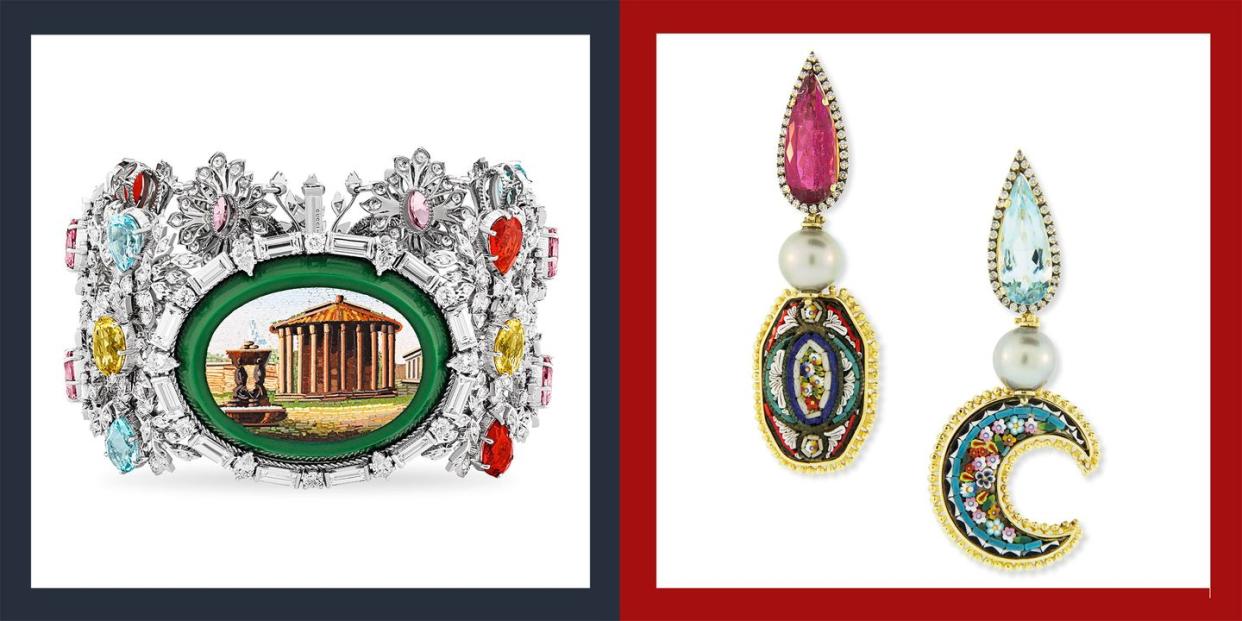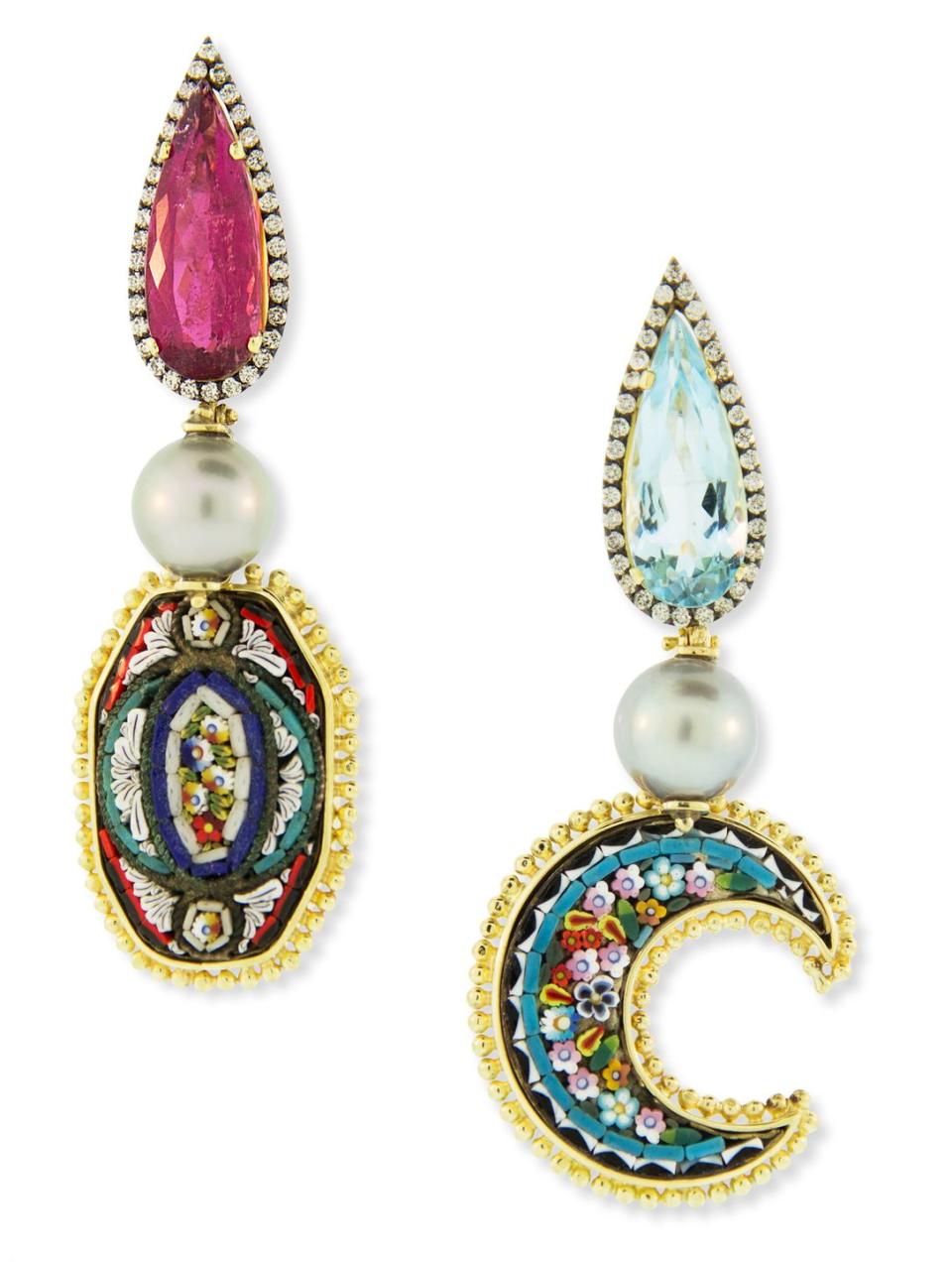The Biggest New Jewelry Trend Features the Tiniest of Mosaics

- Oops!Something went wrong.Please try again later.
"Hearst Magazines and Yahoo may earn commission or revenue on some items through these links."
Above: Gucci bracelet.
Alessandro Michele, creative director at Gucci, is known for revisiting wardrobe staples with an eye for modernity, reinterpreting suiting, scarves, and the house’s signature loafers. So it’s no surprise that his latest high-jewelry collection, Hortus Deliciarum, shown this past summer in Rome, included pieces that recast the ancient art form of micromosaic in an entirely new context.
The Vatican workshops recruited micromosaic artisans from Venice during the 18th century to save the deteriorating frescoes of St. Peter’s Basilica; they worked to reduce mosaic tiles into tiny pieces to cover the fading paintings. Those small tiles, or tesserae, were later deployed to create finely detailed portraits, jewelry, and furniture. The form’s popularity rose during the 19th century when it was used to depict the Eternal City’s ancient monuments, from the Pantheon to the Colosseum, and to make wearable souvenirs for tourists on Europe’s Grand Tour.
Today, the Vatican’s mosaic studio still trains new generations of apprentices in classic imagery, but a number of practicing artisans are transforming the craft into something more contemporary. One of those is Francesca Neri Serneri, whose company, Le Sibille, creates micro-mosaic florals, scarabs, and playful patterns in distinctly fashionable jewelry designs. “We are evolving and innovating this ancient technique,” says Neri Serneri, who herself trained with a Vatican master. Instead of creating flat images, she uses rounded tesserae to forge three-dimensional pieces, like a ring inspired by the cupolas from the Hagia Sophia cathedral in Istanbul.

The artist Maurizio Fioravanti takes a different approach. Rather than exposing the intricate tilework, his elaborate designs appear to be painted with vivid colors. “The more you study the piece, the more there is to discover,” says the Roman designer, who uses thousands of tesserae in varying hues to create his dynamic, diminutive masterpieces, of which he produces only about 10 a year for his Vamgard collection.
Similarly, the Italian family-owned tile-maker Sicis shapes tesserae for jewelry from crushed semi-precious stones with a focus on color.“We create hues that can’t be realized with gemstones,” explains Gioia Placuzzi, the company’s creative director. “Good micromosaic design is all about color.”
But like Michele, some designers prefer to put their own idiosyncratic spins on the classics. The Brazilian jeweler Silvia Furmanovich, for her part, juxtaposes vintage micromosaics with bold gems, wood, and even beetle wings. Whatever your preference, one thing is certain: This time-tested technique has enduring appeal.

This story originally appeared in the Winter 2023 issue of ELLE DECOR. SUBSCRIBE
You Might Also Like

